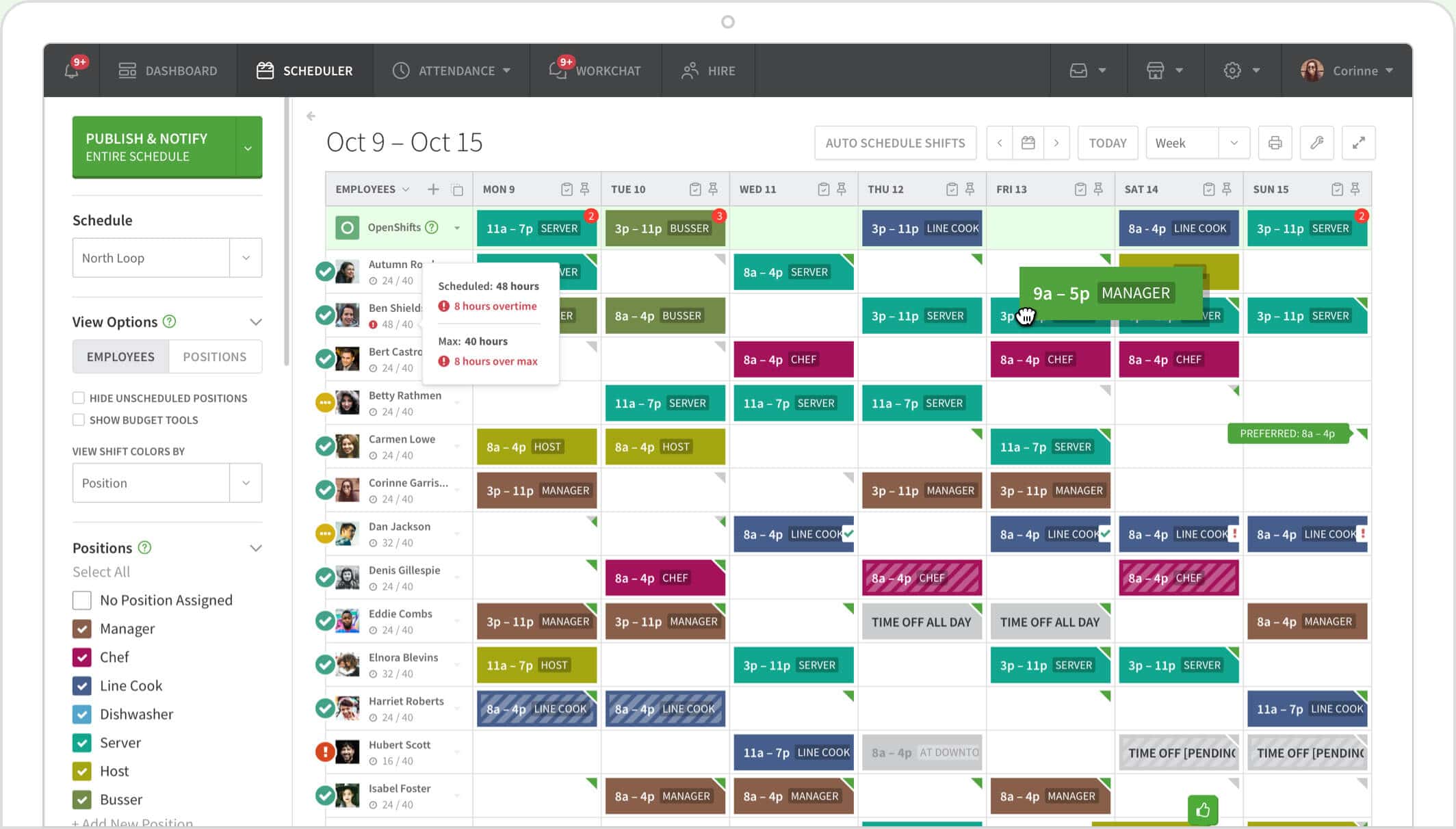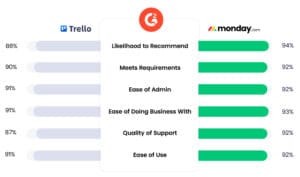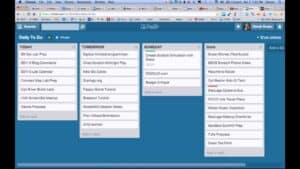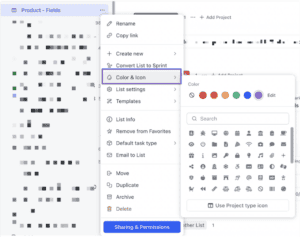Efficient Employee Scheduling for Team Success
Managing your team’s time effectively starts with smart employee scheduling. Balancing the needs of the business with employee preferences can be challenging, but it’s key to maintaining productivity, morale, and customer satisfaction. In this article, we’ll explore how optimizing employee scheduling can help teams work efficiently and provide the best tools to streamline the process.
Introduction: Why Employee Scheduling Matters for Teams
Employee scheduling is one of the most critical aspects of managing any business. Poor scheduling can lead to overworked staff, underutilized resources, and costly operational inefficiencies. On the other hand, well-organized schedules ensure that employees are working during peak times, reducing unnecessary downtime and maximizing productivity. Whether you’re managing a retail store, a restaurant, or an office-based team, having the right employee scheduling system in place can make or break your operational success.
Benefits of Effective Employee Scheduling
1. Boosts Productivity
With the right scheduling system, you ensure the right people are available at the right times. This reduces idle time and makes sure you have adequate staffing during peak hours. Efficient schedules can also prevent burnout by balancing workloads and giving employees adequate rest.
- Tip: Use scheduling tools that allow managers to forecast busy times and assign shifts accordingly.
2. Improves Employee Satisfaction
Offering employees the ability to swap shifts, request time off, or view their schedules in advance increases job satisfaction. Happy employees are more engaged and productive, and flexible scheduling can help retain top talent by offering them more control over their work-life balance.
- Tip: Tools like Deputy and When I Work allow employees to request time off or swap shifts without disrupting operations.
3. Reduces Labor Costs
Employee scheduling software helps businesses forecast labor needs and avoid overstaffing or understaffing situations. Accurate labor forecasting ensures you’re not paying for unnecessary hours, reducing payroll expenses while meeting operational demands.
- Tip: Platforms like Homebase allow you to monitor labor costs in real-time, preventing overspending on shifts.
4. Minimizes Scheduling Conflicts
Automated scheduling tools can eliminate the frustration of human error by preventing double-bookings or shifts being assigned to employees who are unavailable. This helps reduce misunderstandings and ensures that your team is well-prepared for each shift.
- Tip: Choose a scheduling tool that integrates with your existing HR software to ensure accurate availability data and conflict-free scheduling.
5. Enhances Team Communication
Many scheduling tools come with built-in communication features, allowing managers to send messages or notifications directly to employees about shift changes, updates, or requests. This streamlines communication and keeps everyone on the same page.
- Tip: Look for software that provides instant notifications for last-minute scheduling changes to ensure quick communication.
Best Practices for Employee Scheduling
1. Use a Digital Scheduling Tool
Manual scheduling can lead to errors and takes too much time. Switching to a digital scheduling tool allows you to automate most of the process. Many of these tools also provide real-time data, making it easier to adjust schedules on the go.
- Tip: Choose tools like Deputy or Shiftboard that are specifically designed for team scheduling and offer robust features.
2. Offer Shift Flexibility
Encourage employees to have input into their schedules. When they can switch shifts with coworkers or request time off easily, they’ll feel more empowered and engaged. Flexibility also leads to better coverage during high-demand times, boosting productivity.
- Tip: Use a tool that allows employees to request time off and swap shifts within the software without disrupting management.
3. Track Attendance and Performance
Employee scheduling tools often include features to track attendance and performance. By analyzing data on punctuality, hours worked, and overtime, managers can optimize future schedules and ensure that their top-performing employees are rewarded for their contributions.
- Tip: Implement attendance tracking tools like TSheets or Homebase to get an accurate picture of employee performance.
4. Plan for Peak Times
Effective scheduling involves understanding when your business experiences its busiest times. Use past data to predict periods of high demand, and schedule your most skilled workers during these shifts to ensure optimal performance and customer satisfaction.
- Tip: Tools like When I Work can provide historical data and forecasting, helping you schedule smarter for peak periods.
5. Keep Employees in the Loop
When employees have visibility into their schedules and any upcoming changes, it reduces confusion and last-minute absences. Ensuring transparency also allows employees to plan their personal lives around work, reducing stress and improving their overall satisfaction.
- Tip: Choose a scheduling tool that provides mobile access so employees can check their schedules from anywhere, like with Shiftboard or Sling.
Top Tools to Simplify and Scale Your Employee Scheduling
- Deputy: A powerful employee scheduling tool that allows managers to automate shift planning, track hours worked, and monitor labor costs. It also includes features for employee communication, time-off requests, and shift-swapping.
- Homebase: Designed for small businesses, Homebase makes scheduling, time tracking, and payroll management simple. It also has built-in tools to track employee availability and monitor labor costs.
- When I Work: An easy-to-use scheduling tool that helps managers organize shifts, track attendance, and communicate with team members. Its mobile app ensures employees can check their schedules on the go.
- Shiftboard: Great for teams that require complex scheduling, Shiftboard offers customizable features that help automate shift assignments, reduce conflicts, and integrate with other HR tools for seamless management.
- TSheets by QuickBooks: This time tracking and scheduling tool integrates with payroll systems to streamline time and attendance management. It’s ideal for teams that need accurate payroll integration and real-time tracking.
- Sling: Sling is a scheduling tool that includes time tracking, labor cost optimization, and communication tools. It’s especially helpful for businesses managing both full-time and part-time employees.
- ZoomShift: A great tool for businesses that rely heavily on hourly workers, ZoomShift helps managers assign shifts, handle time-off requests, and reduce scheduling conflicts while providing employees with real-time updates.
Conclusion: Master Employee Scheduling for Team Efficiency
Mastering employee scheduling is crucial for maintaining a productive, engaged, and cost-effective workforce. By using the right scheduling software, you can optimize team shifts, improve communication, and ensure that employees remain satisfied and productive. Implement these scheduling strategies and tools to simplify your workflow and keep your team running like a well-oiled machine.
FAQs
How does employee scheduling software improve productivity?
Employee scheduling software allows businesses to forecast demand, ensure adequate staffing, and minimize downtime, resulting in better overall productivity.
What is the best tool for managing employee schedules in small businesses?
For small businesses, Homebase is an excellent choice, offering scheduling, time tracking, and payroll features all in one.
How can flexible scheduling improve employee satisfaction?
Flexible scheduling allows employees to balance their work and personal lives, reducing stress and increasing overall job satisfaction and retention.
How do I prevent scheduling conflicts?
By using employee scheduling tools with built-in conflict detection, you can ensure that shifts aren’t assigned to employees who are unavailable or overbooked.
What are the benefits of digital scheduling tools?
Digital tools streamline the scheduling process, reduce errors, improve communication, and provide real-time data for better decision-making.
Keywords: employee scheduling, team productivity, shift management, labor cost reduction, flexible scheduling, time tracking, scheduling tools






